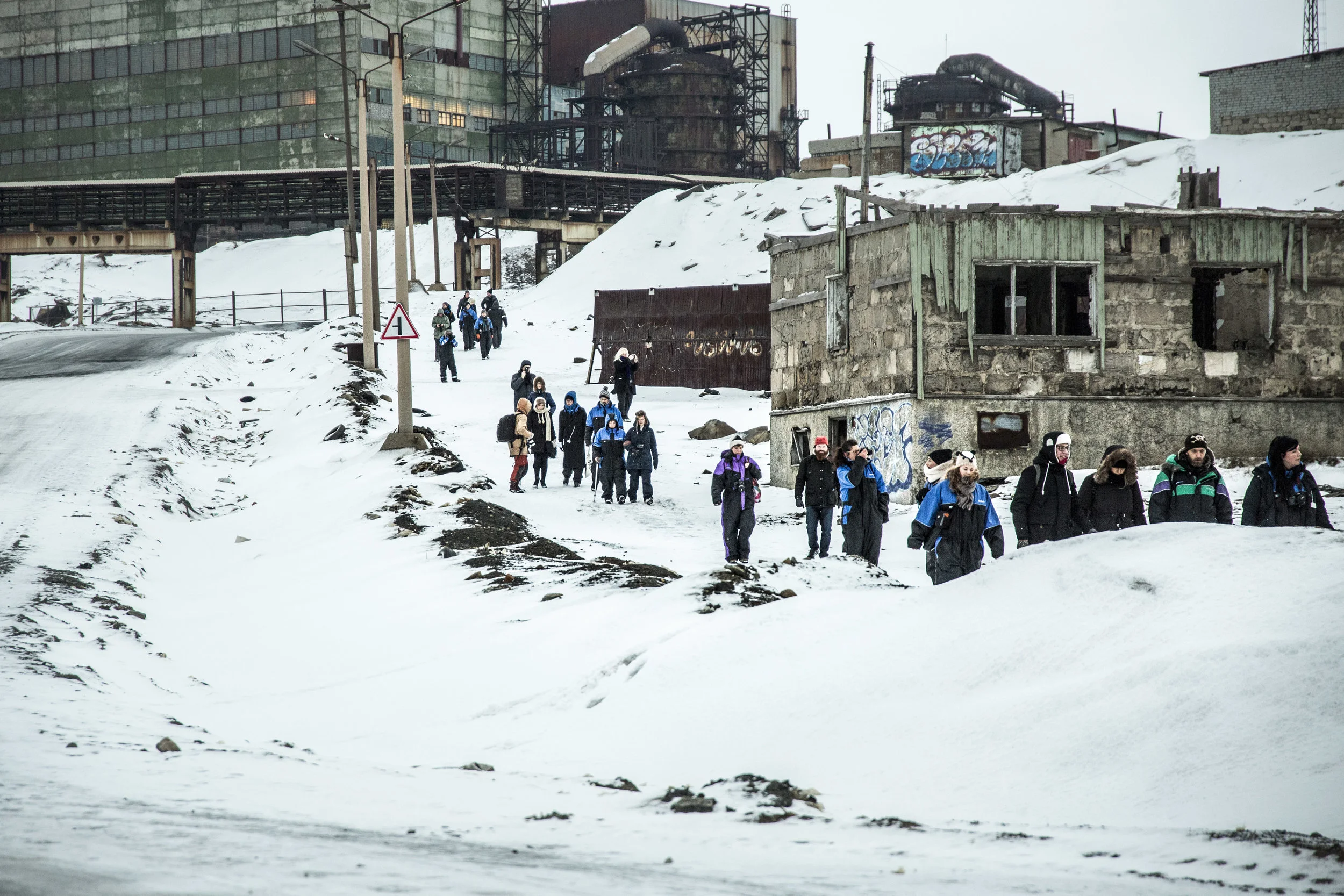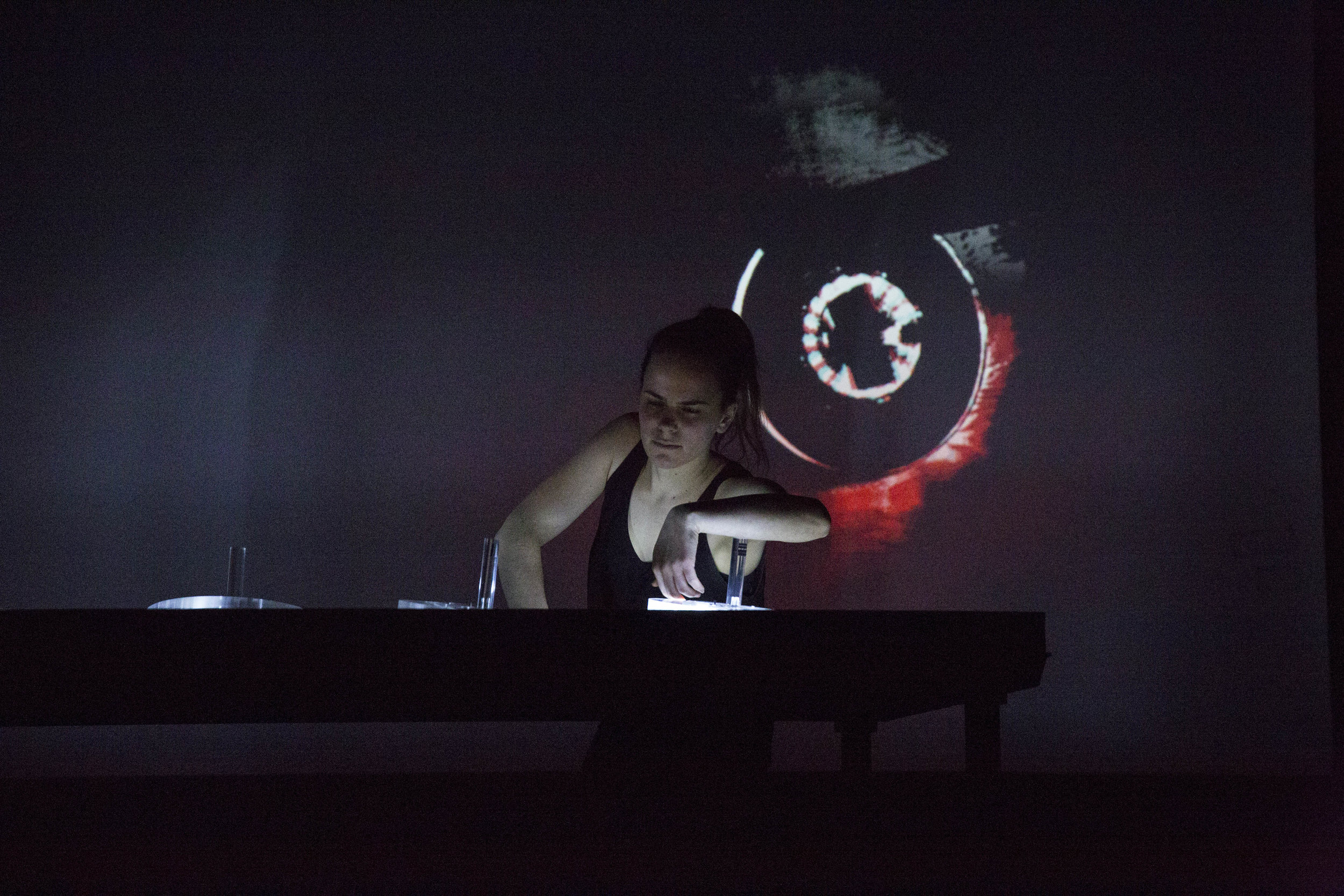Biking Borders
By Stahl Stenslie
Backdrop: within few weeks in 2015 more than 5000 Syrian and war refugees flee into Norway from Russia, passing. How did they get there? And why?
A Chinese curse says ‘may you live in interesting times’. Like it or not we live in interesting times. We live in a time marked by mass migration, refugee crisis and border crossings. Within a few weeks in 2015 thousands of refugees sought safety by crossing the Russian-Norwegian boarder station at Storskog, the northernmost boarder station in the world. The crossing is literally placed in no-mans land, in the midst of a barren, arctic region, way up North. What made so many risk a long, expensive and uncertain journey but despair and an all-too-understandable wish for a safe life and just livelihood? Finding the route across Storskog was a straining, but creative way of entering the promised lands of Europe.
“The somatic state of a border-crossing refugee at Storskog”
Crossing the boarder between Russia and Norway is normally no easy affair, not even for Norwegians. First of all the security is tight to put it mildly. Vehicles, travellers are checked thoroughly at both sides, screened while papers and visas are controlled. Due to a strange agreement dating from the cold war, no one is allowed to cross by foot. You have to drive across on wheels. The agreement says nothing about the type of vehicle, only that it must be on wheels. The cheapest and best way of doing this is on a bike. A Russian bike. For around 120 Euros you can buy a childrens bike in Nikel, the nearest town to the border. From Nikel it is only a 40-kilometer bike ride to Storskog. Although some prefer paying locals to drive them to the border station, then only using the bike to pass the 200 meter no-mans land between the two countries. At the other side the bikes become redundant. Not just because they are bad, mainly because the refugees are moved on by buses. Most of the thousands of bikes left at Storskog still have their plastic wrapping on.
End November 2015 the Dark Ecology tour arrives at the Norwegian side of the border station. We find containers filled with bikes. Last nights snowfall carefully covers them, but not enough to hide the huge amounts. We have read about the bikes, but seeing them stacked together gives a visceral impact of the refugee influx. Before entering Russia papers and cars must be checked. Waiting outside, the bikes are all too inviting. The are parked in a way that they look as if they should be tested and used. The curiosity to find out how it must be to bike those things overcomes me. I put my feet one of the all-too-many bikes and peddle around the station. It is small, all too small for my long legs. The discomfort is not unexpected; I feel I look lost like the refugees on all the photos. The bike feels cheap too. There is only one brake. Despite it being brand new and shiny -even the instruction manual is still attached- it feels more like a toy than a solid way of transport in rugged, arctic regions.
It is my first enactment as a contemporary refugee. Without the despair, hunger, frustration and –possibly- drive of hope, but for the first time I am somewhat put into the somatic state of a border-crossing refugee at Storskog. To my surprise, my fellow travellers react either by curiosity and snapping images or by ethical disgust, snapping comments. For me trying a bike was a spontaneous necessity, a tempting invitation and a must given the massive amounts of news coverage of this strange way of border crossing. It was assimilating what happens NOW. In the world, in Norway, to me, right here. And now I had one of those bikes, this all mighty symbol of the past weeks, this genuine world-crossing vehicle at my hand. Yes, a fetish, but most of all a tool to cross over from one world to another. That is quite something. Although slow, cheap and poor, those bikes were the fastest in the world to catapult its owner into a state of social security.
So why are the bikes stored in containers? Firstly the Norwegian authorities transported all refugees forward into Norway by buss. They could potentially, given space on the bus, take their bikes along. The bikes however, are not legal in Norway. They lack a second brake and they are made out of poor quality materials. Take for example the handlebars as you can see them on the photos. With little effort you can bend them around. What happens to the thousand of bikes? They are all being sent to be scrapped and recycled at a Norwegian scrapyard. No re-export or re-use. A waste? Not if it saves lives I guess.
For the next three days we travel through Russia, until we end up in Nikel on the way home. The day is set for exploring this strange, artificial, dusty and slowly dying mining town. It is not just a nightmare of a town; it is also the town from where the refugees head on to the last stage of their exodus. It is where they buy the bikes, their winter clothes, and their final meals before they bid goodbye to their old world. I continue exploring the somatic, incorporated feeling of what it must be like to end up at the end of the world, only hoping it is not.
I buy a bike, bike around town. The act of buying the same bike used by literally all refugees becomes my own, personal reenactment. Again I find myself driven by inevitable question of how it somatically must feel to bike in Russia during mid winter? Pedalling around on the icy roads in Nikel I wonder and imagine how a Syrian refugee would sense in the same situation. A sightseer of Nikel and the Arctic. Not for fun, but for necessity, safety and for basic human needs. On that bike I become a refugee. However imaginary.
Pedalling up and down the streets of Nikel is no joyous affair, not much to talk about, yet fascinating in its short, bizarre and peculiar history. It is cold, slippery, and dark. A few cars, little traffic, a strange sky, a few streetlights throwing your shadow en-route. After some hours I bike back to our Dark Ecology meeting point: the Nikel House of Culture. A reminiscence of Soviet ideology and rule. I feel a bit as if in Tarkovskij’s film Stalker, except I am not. I am in Nikel. Way more Stalker than one could wish for. And now the bus is about to head back to Norway, to social democracy and ‘safety’.
What happened to my bike? The organizers of the tour strictly forbade me taking it back to Norway. Why? I have still not really found out why. Where they really fearing to be stopped on the border? It has never been illegal to export these bikes to or across the border. And importing it to Norway is also not illegal. It is just not allowed to use it for transport in Norway. With all our papers legal and intact there was no risk involved but the ethical challenge. Perhaps most disturbing to me was how many of the artists and passengers opinioned it too dangerous becoming a little like those refugees – and chose to look away. It was as if 5000 asylum seekers did not matter. They do. I was more thinking of my biking as a naïve, but for me personally important to corporally get a slightest sense of the traumatic situation. Never did I think of a Russian toy bike as being too dangerous a symbol.
The same weekend we travelled, the border was closed to all refugees. How? By way of ‘forward border control’ on the Norwegian side. This made the Russians immediately stop letting refugees through. Since November 0 –zero- refugees have come across on Storskog. For the purpose of understanding these interesting times we live in, I propose to do a yearly bike ride across the border at Storskog to commemorate these brave, desperate and creative people that endeavored on the journey of their lives.








